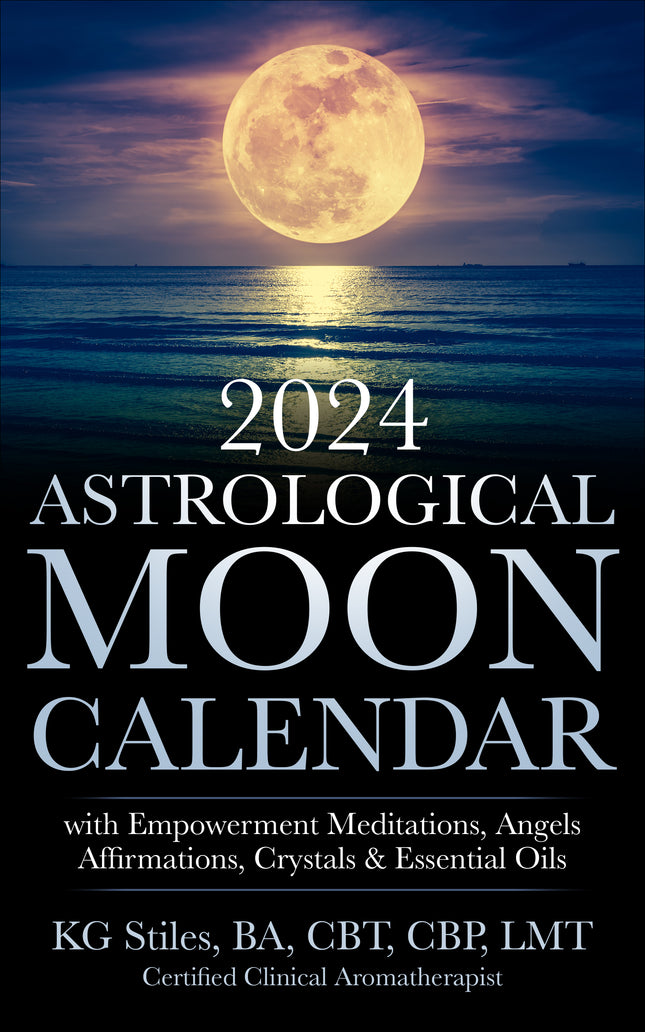 What is Candida?
What is Candida?
The Center for Disease control cites Candida as the most common cause of fungal infections in humans today. The most common type being Candida albicans.
Candida normally lives on the skin and inside the body without causing any problems. However, if it grows out of control, or gets deep inside the body it becomes problematic.
Because Candida albicans has become resistant to pharmaceutical anti-fungals there’s a growing urgency to come-up with new alternatives, like essential oils, to eradicate the fungus.
When a Candida yeast infection is in the mouth or throat it is called thrush. Whereas, in the vagina it’s commonly referred to as a yeast infection (or vaginitis).
Invasive Candidiasis occurs when Candida yeast enters the bloodstream or affects internal organs, i.e. the kidney, heart, or brain. You can find out more information about the different types of Candida infections at the Center for Disease Control (CDC).
How do you get Candida yeast overgrowth?
As I said, typically, the healthy bacteria in your body keep levels of Candida yeast well under control.
However, if healthy bacteria levels are disrupted in some way, i.e. antibiotic use, or your immune system is compromised as in the case of HIV/AIDS, Candida can begin to overproduce and overpopulate the gut.
Many factors can contribute to Candida yeast overgrowth. Here are just a few:
- Taking antibiotics
- Heavy metal toxicity
- Diet high in sugar and refined carbs
- Caffeine
- Excessive alcohol intake
- Weakened immune system
- Oral contraceptives
- Diabetes
- HIV/AIDS
- High stress levels
Symptoms of Candida
Though symptoms of a Candida yeast infection can vary widely, here are a few common complaints.
- Low Energy, Exhaustion & Fatigue
- Brain fog
- Poor memory
- Painful joints
- Poor mood
- Skin rash
- Digestive Issues
- Skin & Nail Fungus
- Athlete’s Foot
- Ringworm
- Oral Thrush
- Vaginitis
- Recurring genital and urinary tract infections
- Inflammation, pain and swelling of tissues
Why is Candida so difficult to get rid of?
In humans, microbial cells, i.e. bacteria and fungi, greatly outnumber the human host cells upon which they live. Candida albicans is the most prevalent fungal species of the human microbiota. Candida colonizes many areas of the body, most especially the gastrointestinal and genitourinary tracts of all healthy human beings.
Research on Candida albicans Biofilms and Disease shows, “Alterations in a person’s immunity, brought on by stress, changes in the gut microbiota, and other factors, can lead to Candida albicans overgrowth.” Candida’s ability to survive and proliferate (like that of many other microorganisms) depends primarily on its ability to thrive as a biofilm, a closely packed community of cells. Candida albicans biofilms are, “Intrinsically resistant to conventional antifungal therapeutics, as well as the human’s immune system, and other environmental threats, making Candida ‘biofilm-based infections a significant clinical challenge.”
How to get rid of Candida?
After suffering with a Candida yeast infection for 10+ years with little to no results while on a strict Candida diet, I discovered that heavy metal toxicity was an underlying cause that was preventing resolution of the Candida yeast overgrowth.
My heavy metal toxicity, i.e. mercury poisoning, resulted from the removal of amalgam fillings. I’d been chasing Candida symptoms for years with no results because of heavy metal poisoning.
After using essential oils and other natural holistic methods of detoxifying and cleansing to eliminate the mercury poisoning, I was screened for heavy metals. Much to my relief, the test came back negative, showing no signs of heavy metal toxicity.
Upon learning this, I once again began a Candida safe diet.
I'd like to note, allergies can also mask a Candida infection and make it difficult to eradicate. So, getting checked for allergies and making sure you’re not allergic to any foods, typically thought to be Candida safe, is important. I tested negative for any food allergies.
I might add, the basics of any Candida safe diet you might try are just a starting point for beginning your Candida yeast healing journey. From all the research I’ve done, including direct clinical experience and my own personal experience, it really comes down to your taking a close inventory of what works for you that will bring balance and health back to your body’s eco-system.
At the start, a food diary was absolutely essential for me. I needed to keep track of what foods worked and which did not until I could see a clear picture emerge. I used intuitive eating to dial into the foods that were my 'super foods,' along with a trial and error approach, to discover the foods that were right for me on a Candida safe diet.
It was through intuitive eating that I discovered many important details that helped me heal, i.e., intermittent fasting, baking soda and oat bran.
An important piece for me in healing Candida yeast overgrowth was focusing on healing my gut and building gut resilience. During my search for healing I tried the various diets, tips and tricks that the well-known ‘healthy gut gurus’ advocate, but - I can blatantly say - none of them worked for me. It was very frustrating!
What worked for me was to draw back the curtains and really look at how every thing I put into my mouth affected me. It took time and extraordinary patience. It also took a willingness to do whatever it took to heal. I had to overcome my resistance to eliminating things that I, quite frankly, thought I could not live without. I just kept tweaking my diet until I made progress.
I might add that due to the permeability of my gut lining, ‘leaky gut syndrome,’ I developed histamine intolerance which complicated matters, but made my situation even more dire for finding a solution. So, I was exceedingly motivated.
The general idea behind a Candida safe diet is to starve the Candida yeast infection, so the Candida albicans dies off. At the same time you introduce antimicrobials to inhibit Candida growth and kill it. The more aggressive you are with both strategies (Candida safe diet and antifungals), the better and quicker you will experience results.
Typically, you will experience some Candida die-off symptoms. Die-off symptoms can be mild to severe and last for varying lengths of time and come in cycles depending upon many factors, i.e. how long you’ve had a Candida infection and how invasive its become.
Candida is very opportunistic and tricky in its strategies for survival. It can bury deep into your tissues and hang out for long periods of time. You have no signs of Candida, yet it’s still there. So go slow, be vigilant and persevere.
It took a couple weeks of eliminating foods before I found the perfect Candida safe diet for me, i.e. foods that didn’t trigger Candida symptoms.
My Basic Candida Safe Diet
YES FOODS
- YES vegetables (non starchy, lightly steamed and some raw salad greens and veggies). I use a pressure cooker to steam veggies, saves time and retains flavor and nutrients.
- YES eggs (organic, pasture-raised)
- YES lamb and beef (grass fed)
- YES olive oil
- YES Celtic salt
- YES Antimicrobials
- YES vitamins and supplements
NO FOODS
- NO sugars
- NO caffeine
- NO yeast
- NO grains
- NO dairy
- NO nuts or seeds
- NO vinegars or ferments
- NO GMOs
- NO meat or poultry fed soy or corn, antibiotics or hormones
- NO high carb foods
- NO starchy vegetables
- NO packaged or processed foods
- NO preservatives or additives
Elimination of foods is a starting point, but by no means the destination. Healing from a Candida infection does not work like a mathematical equation, “If I do this = I’ll be free of Candida.” At least it didn’t work that way for me.
Are probiotics & ferments really that good for overcoming a Candida infection?
I know a lot of the ‘healthy gut’ experts rave about using probiotics and ferments like sauerkraut, but initially you may want to re-think using both, especially ferments. That’s because ferments feed yeast and do not discriminate between which bacteria (good or bad) to feed.
Also, short term a probiotic is great for boosting healthy gut bacteria, but after a while you may want to focus primarily on eating prebiotics like garlic which is one of the best anti-fungals when eradicating Candida yeast.
Prebiotics feed healthy gut microbes and also help you nourish and feed a multitude of strains of healthy bacteria. While a probiotic (even a broad spectrum one) will keep introducing the same strains of bacteria which can result in a ‘mono’ culture of bacteria. You want a thriving, wide spectrum and flourishing community of healthy microbes in your gut.
How long does it take to heal a Candida infection?
Stage 1
It took about three weeks to see noticeable results after the two weeks it took to find the Candida safe diet that was right for me.
Stage 2
Then I waited another three weeks, symptom free, before beginning to 'slowly' reintroduce small amounts of whole foods back into my diet that had been on my NO list, i.e. quinoa, oat bran, ghee, yams, herbs and spices.
Stage 3
Altogether, it took about three months of being on a Candida safe diet and eliminating foods that triggered Candida symptoms before I was able to finally start adding a wider selection of whole foods back into my diet. I also gingerly added tiny amounts of other foods that had been on my NO foods list without repercussions, i.e. triggering symptoms.
At this stage of reintroducing foods I recommend taking it slow. Generally, have a tiny amount of a food with at least a day in between to assess how you’re doing with that food back in your diet.
Take your time, do your research and find out what works best for you!
Essential Oils Candida Research
Exciting research shows that using essential oils can play a valuable role in healing a Candida albicans infection.
A 2018 study cited, “The rising number of immunocompromised and immunodeficient patients has resulted in an increased incidence of fungal infections. Candida-related infections affect 65% of HIV positive individuals and over 80% of AIDS patients.”
The study investigated the antifungal potential of twelve essential oils and two terpenes (E-cinnamaldehyde and linalool against C. albicans planktonic and biofilm growth.
Antifungal activity of commercial essential oils was compared to chlorhexidine (CHX) and triclosan. E-cinnamaldehyde is found in Cinnamon leaf and bark (especially high in the bark). Linalool content is high in Neroli, Bergamot, Spike Lavender, Thyme, Coriander and Basil. Rosewood is especially high in linalool though it is listed on the ICUN Red List of Endangered Species and sale is regulated worldwide at this time. Coriander is almost as high in linalool content as Rosewood though the aroma profile is quite different.
This study showed that all twelve essential oils and the two terpenes, as well as the pharmaceutical drugs triclosan and CHX, had antifungal activity against planktonic C. albicans. Six of these compounds (CHX, cinnamon, E-cinnamaldehyde, linalool, geranium and melissa) were also active against C. albicans biofilms, which are usually challenging to effectively inhibit.
Another 2018 study cited, “An urgent and unmet need for new antifungal therapies. Global fungal infection rates continue to rise and fungal infections pose increasing burdens on global healthcare systems. Exacerbating the situation, the available antifungal therapeutic arsenal is limited and development of new antifungals has been slow.” The study screened 60 essential oils for antifungal activity against Candida albicans and other fungus. “Ten essential oils showed remarkable antifungal and cytotoxic activities: Indian, Australian, and Hawaiian sandalwoods; melissa; lemongrass; cilantro; cassia; cinnamon; patchouli; and vetiver.”
A 2016 study showed, “Mint, basil, lavender, tea tree oil, winter savory and oregano essential oils to inhibit both the growth and the activity of Candida albicans more efficiently than the pharmaceutical drug clotrimazole.” The study concluded that, “Damages to Candida albicans induced by essential oils at the cellular level were stronger than those caused by clotrimazole.”
A 2017 study showed clove oil to be the most effective and broad spectrum antifungal agent against fungal species of environmental origin. The study concluded, “Essential oils have the potential for wide acceptance for indoor use as alternatives to traditional cleaning agents in improving indoor air.”
Researchers investigated the effect of eugenol, a major component of clove oil, on Candida albicans which can cause fungal infections such as athlete’s foot, oral thrush, and vaginal yeast infections. According to the study both carvacrol and eugenol (chemical constituents of clove oil) had an anti-candida effect.
Concluding: “The results of the experiment leads us to consider both eugenol and carvacrol as possible antifungal agents.”
Another study was conducted on myrrh (Commiphora myrrha) for its anti fungal properties. Sesquiterpene, a chemical component of myrrh was shown to have both anti fungal and antibacterial activities against standard pathogenic strains of Escherichia coli, Staphylococcus aureus, Pseudomonas aeruginosa and Candida albicans.
A 2017 fungicidal research study was conducted on plants and pharmaceuticals. The study showed that the main chemicals most effective for killing fungus were carvacrol, thymol, linalool, and trans-caryophyllene.
What are your options?
Healing a Candida albicans infection can be quite challenging. However, what are your options when faced with any health challenge? Your health is your most valuable asset and you must nurture and protect it. Nurturing and caring for your health is the most important thing you can accomplish today. The quality of your life experience for years to come depends upon it.








Leave a comment